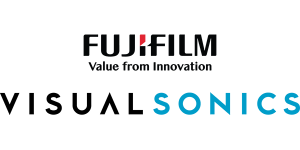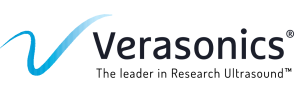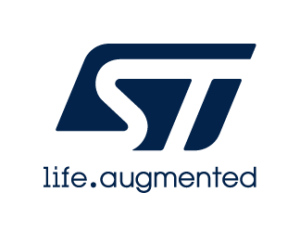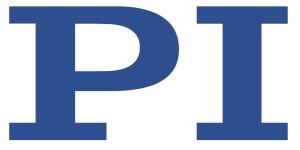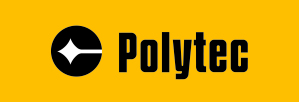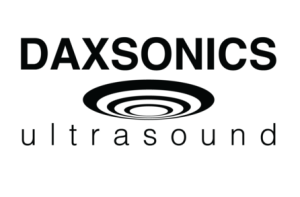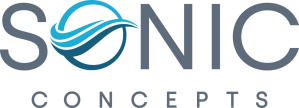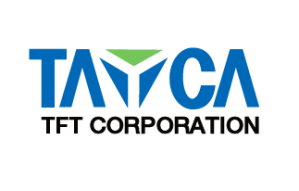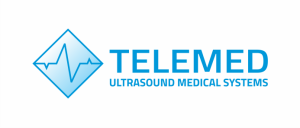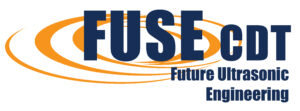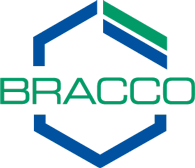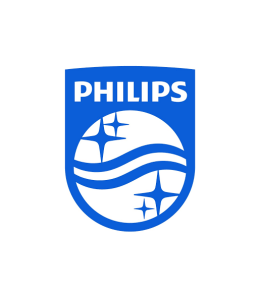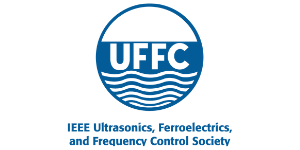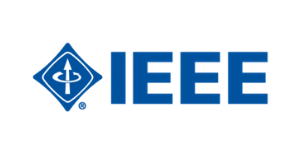Click on the speaker's headshot or name to view their full biography.
Optical/Photoacoustic Hybrid Microscopy for Visualizing Morphology and Composition of Cells
Compared with other medical imaging modalities, the advantage of ultrasound imaging is multi-scale and functional. Because the wavelength and beam width are inversely proportional to the frequency of ultrasound, higher frequency ultrasound provides higher resolution imaging. We have been developing scanning acoustic microscopy (SAM) for medicine and biology since 1985. Important aspect of SAM is to provide biomechanical information of the tissue because the square of sound speed is proportional to the bulk elastic modulus. Sub-micron resolution imaging has not been available because the highest frequency used in practical SAM was limited to 1.3 GHz. Our first motivation of introducing laser to SAM; in other words, development of photoacoustic (PA) imaging, was to simply improve the resolution. Of course, PAM also provides higher contrast imaging according to optical absorbers such as red blood cells. The objective of the present study is to simultaneously acquire morphology and compositions of cells by developing an optical/photoacoustic hybrid microscopy to achieve sub-micron imaging.
XBAR
A laterally excited shear acoustic wave resonator (XBAR) has been proposed recently and the first devices were manufactured and measured. This device exploits the fundamental shear mode resonance in the λ/2-thick piezoelectric membrane, strongly coupled to the lateral electric field in a properly selected cut of lithium niobate (LNO). In this review paper, we consider in detail the properties of such resonators, their theory, simplified admittance formulas, modeling of XBARs, loss mechanisms, suppression of parasitic modes, etc. Recent experimental results are presented.
Targeted nonthermal treatment of brain cancer with focused ultrasound and acoustic cavitation
Transcranial focused ultrasound (tFUS) mechanical ablation via inertial cavitation is an emerging technique for treating brain tumors. Spatial control of inertial cavitation activity is necessary for successful ablation of the tumor while sparing healthy brain tissue of unwanted collateral damage. In this study, we compared the use of perfluorobutane-based phase-shift nanoemulsions (PFB PSNEs) and commercial microbubbles (MBs) as inertial cavitation nuclei for focal mechanical ablation of brain tumors. Successful inertial cavitation in rats was achieved using PFB PSNEs and MBs at different acoustic pressure thresholds (3.25 MPa and 0.75 MPa for PFB PSNEs and MBs, respectively) with 837-kHz transcranial pulsed ultrasound (duty cycle = 1%, 2 mins sonication). Magnetic resonance imaging and histological analysis of brain slices after HIFU exposure revealed that PFB PSNE-facilitated ablation generated a more spatially localized lesion and prevented widespread edema compared to MB-facilitated ablation. Tests in the F98 glioma model found a higher tumor ablation efficiency with PFB PSNEs; 89.4 ± 6.8% of the tumor was found to be ablated with PFB PSNEs, versus 11.1 ± 7.7% with MB. Survival was also improved with the nanoemulsions (median survival: 27 vs. 25 days, overall survival: 12.5% vs. 0% in 32 days for PFB PSNEs and controls). These results suggest that PFB PSNEs may have advantages over MBs for nonthermal HIFU ablation in the brain.
Advanced Technologies for the Manufacture of Customized Ultrasonic Transducers
In dependence of the application field, ultrasonic transducers need to be tailored according to their working frequency, operational mode, as well as inner and outer structure.
Low frequency ultrasonic transducers with frequencies below 1 MHz are especially interesting for sonar applications and air-ultrasound. Here, piezoceramic fiber composites are beneficial because of their almost unlimited thickness. Besides, they also show unique properties for frequencies between 1 MHz and 10 MHz. Recent research focuses on single-fiber ultrasonic transducers for 3D-ultrasound-computer tomography (USCT) systems, where opening angle and bandwidth are enhanced compared to conventional dice-and-fill composites. For high resolution imaging in biomedical and non-destructive evaluation high frequency ultrasonic transducers are favorable. Based on the soft mold process, ultrasonic transducers with operating frequencies up to 40 MHz can be manufactured. Furthermore, printed ultrasonic transducers fulfill market requirements for miniaturization, prize reduction and increased electronic density. Using screen printing technology, net-shaped structures can easily be applied together with structured electrodes and matching layers. This allows for batch production of phased array transducers with excellent accuracy and reproducibility.
The presentation will give an overview covering design aspects, technology, and applications of ultrasonic transducers beyond conventional manufacturing technologies.
Techniques for fast super-resolution ultrasound microvascular imaging
In the past few years, we have witnessed the rapid growth of the field of super-resolution ultrasound microvascular imaging. The unmatched combination of imaging resolution and penetration opened new doors for a myriad of clinical applications using microvascular biomarkers. At present a major obstacle for clinical translation of super-resolution ultrasound is the slow imaging speed. In this talk I will present several fast super-resolution ultrasound imaging techniques based on the principles of spatiotemporal filtering, sparsity- promoting algorithms, and machine learning. I will introduce one of our newly developed, deep learning-based super-resolution microbubble velocimetry method that offers real-time super-resolution imaging capability. Accompanying the technical themes, I will also present examples of preclinical and clinical applications of super-resolution imaging including cancer and Alzheimer’s disease.
Applications of Data Science and Machine Learning to Ultrasonic NDE
Since the early 2000s, digital ultrasonic array controllers have made it possible to acquire all possible raw data from an array in near real time, a process termed Full Matrix Capture (FMC). FMC data is extremely rich in information but also extremely complex. Each individual A-scan in an FMC dataset contains superposed responses due to scattering from structural features, material microstructure, and potentially defects. Furthermore, waves may propagate along many possible ray paths, possibly with mode conversions. The standard approach to array data processing is to form an image based on an assumed ray path; responses due to waves propagating on any other ray path appear as artefacts in the image. An NDE operator must identify anomalous responses from defects in the presence of echoes from geometric features and imaging artefacts. However, the ray path on which potential defects will manifest themselves may not be known, hence the natural extension to increase the probability of detection is to form multiple images based on different ray-paths; this is termed multi-view imaging. From the point of view of an NDE operator, this leads to information overload, hence automation is desirable. In this paper, several techniques for automating the analysis of array data are considered. These include data fusion of multi-view images based on statistical considerations, machine learning for the suppression of structural echoes and artefacts, and various defect characterisation methods. Application of similar techniques to guided wave data from sparse distributed arrays for structural health monitoring will also be discussed.
Magnetic Surface acoustic waves sensors (MSAW)
Interest in the development of sensors for the detection of magnetic field has never stopped growing, given the wide range of applications that can be addressed. Recent developments in the field of the IoT, the industry 4.0 and autonomous vehicles have generated new needs and in particular for wireless magnetic sensors with small size, lightweight, compactness, and lower power consumption or even self-powered (batteryless). Current researches focus on devices that can take advantage from MEMS technology to scale down the sensors.
Surface acoustic wave (SAW) devices, are key components in communication systems and are widely used as filters, delay lines or resonators and are still relevant for the development of 5G compatible technologies or beyond. Because SAW devices are highly sensitive to external physical parameters and to any disturbance that may affect the velocity, distance travel or even the mode of wave propagation, they also offer very promising solutions as sensor in a wide range of applications including magnetic field detection. SAW sensors have the advantage of being robust, small, passive, wireless and even packageless in specific configurations. In reflective delay line (R-DL) configuration, they can integrate the identification code and operate as an RFID which allows simultaneous interrogation of several sensors. Combined with magnetostrictive layer, SAW sensor could exhibits a controlled sensitivity to magnetic field intensity and direction.
In this lecture, an overview of general principle of the MSAW sensors in wired and wireless configurations and developments needed to implement this technology will be given. A review of recent works including from our group will be presented by positioning them with respect to the state of the art. The sensitivities, detection limits and range of detection will be specified for each structure and configuration considered.
Finally, and depending on MSAW performances, examples of potential applications in the field of industry, biomedical, energy, transport, etc. will be proposed and analyzed together with a future outlook of what MSAW technology can bring.
Non-invasive ultrasound therapy in the spinal cord
Focused ultrasound and microbubbles can transiently increase the permeability of the barriers of the central nervous system (blood-brain barrier and blood-spinal cord barrier). When intact, these barriers restrict the passage of therapeutics from the blood stream into the tissue parenchyma. The ability of ultrasound to impact these barriers in a targeted and reversible manner holds great promise for improving the treatment of CNS disorders. The effect on the blood-brain barrier has been extensively studied and has reached the stage of clinical investigations. Despite the presence of the functionally equivalent blood-spinal cord barrier and the need for novel interventions to treat spinal cord disorders, there has been comparatively little work advancing ultrasound drug-delivery approaches for the spinal cord. This talk will highlight the state of the field and report on recent preclinical findings from our group in both small and large animal models, as well as technological advances in focusing sound through the complex bony geometry of the human spine. In combination with current methods for brain, the development of robust treatment approaches for the spinal cord will enable treatment of the entire neuroaxis, broadening the utility of this technology.
Concepts for picosecond ultrasonics with x-rays
Ultrafast X-ray diffraction (UXRD) experiments provide material specific access to coherent longitudinal acoustic phonons (coherent strain wave packets) and heat transport (flow of incoherent excitations) in nanoscale heterostructures. Contemporary laser-based sources of hard x-rays with femtosecond pulse duration have sufficient x-ray flux and stability to analyze the dynamics of films with single-digit nanometer thickness – presenting an excellent alternative to large scale facilities or all-optical picosecond ultrasonics. The presentation will highlight the connection of (optically triggered) nanoscale thermal transport for picosecond ultrasonics with examples of metallic and insulating materials which may possess ferroelectric or ferromagnetic phase transitions.
Quantitative multiparametric ultrasound and machine learning for prostate cancer localization
This work focuses on the localization of prostate cancer by ultrasound imaging. The analysis of the microvascular architecture by dynamic contrast-enhanced ultrasound allows for the detection of cancer angiogenesis by convective-dispersion modeling of the transport kinetics of ultrasound contrast agents. Extension to 3D ultrasound imaging, allowing also for improved estimation of the vascular architecture, is also introduced. Finally, the contribution of machine learning to boost the accuracy of prostate cancer localization will be demonstrated through a radiomic approach combining complementary quantitative parameters (perfusion, dispersion, and elasticity).
A new look to airborne acoustic levitation: trapping at the pressure antinodes
It is a commonly accepted notion that, in presence of pressure gradients, material objects are attracted towards the lowest time-averaged pressure regions. According to Bernoulli’s principle, zones with a higher fluid velocity give rise to a lower pressure, which also pulls nearby objects. Both conditions are simultaneously fulfilled at the pressure nodes of an acoustic standing wave in air, thus it is not surprising that objects can be levitated at these points. Indeed, most of the ultrasonic trapping devices that have been recently developed are based on the generation of low acoustic pressure regions to hold objects. Conversely, we demonstrate that objects can also be trapped in mid-air at the pressure antinodes of a standing wave, where the average pressure is the highest and the particle velocity is minimum. For a given material, this only depends on the size of the levitated particle. By varying this parameter, the magnitude of the acoustic trapping forces can also be maximized or null everywhere. This “particle size-effect” is analogous to what has been observed in optical traps and it is a general feature of the interaction between matter and structured wave fields.
Circuit Design for Portable Ultrasound Probes
As a step-up from the 200-year-old stethoscope, a point-of-care ultrasound imaging device provides a window into the human body without any ionizing radiation. At the heart of such a device is a highly integrated semiconductor chip, which is the key enabler of the compact form factor, the high bandwidth for multi-modal versatility, and the low power consumption.
The talk will first introduce the basics of medical ultrasound and ultrasonic beam-formation. After that, analog front-end circuit blocks will be discussed, including their design strategies and challenges in expanding them into a large array. Different design topologies for the transmitter path will be compared and analyzed, highlighting the necessity of finding the right topology for the corresponding application. A low-power, low-noise amplifier design for the receiver path will be presented, which achieves close to optimal power efficiency for capacitive ultrasonic sensors. The array architecture and considerations for testing and production will also be discussed. The talk will conclude with a circuit performance comparison from different works across industry and academia.
Experimental and Computational Methods for Quantitative Acoustic Microscopy at ultra-fine 2-micrometer resolution
Quantitative acoustic microscopy (QAM) uses ultra-high frequency ultrasound to form quantitative two-dimensional (2D) maps of acoustical properties of thin sections of tissues at micrometer scale. Our group has developed novel QAM instruments operating at 250 MHz, 500 MHz, or 1 GHz, yielding spatial resolutions of 7, 4, and 2 µm, respectively. These QAM instruments form exquisite 2D maps of acoustic impedance, speed of sound, and attenuation and were used to assess tissue properties in numerous organ systems. QAM instruments are expensive because they require custom transducers, fast electronics, dedicated pulsers and amplifiers, and ultra-precise motor stages. QAM experimental studies require expert users and are sensitive to vibrations and temperature variations. Our group has developed experimental and computational methods based on compressed sensing and super resolution to mitigate these challenges and pave the way towards the next generation of QAM instruments. Compressed sensing methods were used to reduce scanning time by a factor of 20 and the acquired data by a factor of 60 (Fig. 1). Single-frame super-resolution methods were also investigated to improve spatial resolution. Together these methods allow using lower center frequency transducer, low-cost motors, and much lower sampling rates at nearly no cost to the final images. These methods pave the way towards a new generation of QAM instruments which are affordable, turn-key, and do not require expert users.
Topological gallery of non-Hermitian whispers
In 1878, Lord Rayleigh observed the highly celebrated phenomenon of sound waves that creep around the curved gallery of St Paul’s Cathedral in London. Recently, intense research efforts have focused on exploring non-Hermitian systems with cleverly matched gain and loss, facilitating unidirectional invisibility and exotic characteristics of exceptional points. Likewise, the surge in physics using topological insulators comprising non-trivial symmetry-protected phases has laid the groundwork in reshaping highly unconventional avenues for robust and reflection-free guiding and steering of both sound and light. We construct a topological gallery insulator using sonic crystals made of thermoplastic rods that are decorated with carbon nanotube films, which act as a sonic gain medium by virtue of electro-thermoacoustic coupling. By engineering specific non-Hermiticity textures to the activated rods, we are able to break the chiral symmetry of the whispering-gallery modes, which enables the out-coupling of topological ‘audio lasing’ modes with the desired handedness. [Nature 597, 655 (2021)]
Machine Learning and Modeling of Ultrasonic Signals for High-Fidelity Data Compression
Ultrasonic systems are widely used in imaging applications for non-destructive evaluation and medical diagnosis. These applications require large volumes of data to be processed, stored, and/or transmitted in real-time. This study explores the development of learning models for massive data compression using machine learning techniques. Furthermore, this study utilizes the fast chirplet transform algorithm to successively estimate broadband, narrowband, symmetric, skewed, nondispersive, or dispersive echoes. An objective of this study is to design computationally efficient architectures and the implantation of 3D ultrasonic data compression algorithms on a system-on-chip (SoC) hardware platform.
Integrated Quantum Dot Optomechanics
Surface Acoustic Waves and elastic waves in general control the optical properties of semiconductor quantum dots (QDs) providing a versatile nanoscale strain sensor. The underlying optomechanical interaction can be deliberately exploited for frequency transduction. These couplings can be enhanced in (hetero-)integrated piezoelectric-semiconductor device platforms for future hybrid quantum technologies.
CLINICAL TALK: Mid- and long-Term atrio-Ventricular Mechanics in Children After Recovery from Asymptomatic or Mildly Symptomatic COVID-19
The author presents the anatomical and pathophysiological bases as well as the principles for echocardiographic evaluation of mechanical aspects of cardiac function based on speckle tracking method. This technique uses a phenomenon involving the formation of characteristic image units, referred to as speckles or acoustic markers, which are stable during cardiac cycle, on a two-dimensional echocardiographic picture. Changes in the position of these speckles throughout the cardiac cycle, which are monitored and analyzed semi-automatically by a computer system, reflect deformation of both, cardiac ventricle as a whole as well as its individual anatomical segments. The use of information obtained based on speckle tracking echocardiography allows to understand previously unclear mechanisms of physiological and pathophysiological processes. The Author presents the clinical value of this technique in a range of pathology including congenital heart disease, cardiomyopathies and heart failure.
CLINICAL TALK: Shear wave elastography in diffuse liver disease: advantages and limitations
Shear wave elastography (SWE) has been accepted by guidelines as a reliable substitute of liver biopsy in several clinical scenarios. Guidelines on the use of SWE techniques for liver stiffness assessment have been produced by several Federations or Societies, including EFSUMB, WFUMB, EASL-ALEH, APASL, and AGA. Moreover, the Society of Radiologists in Ultrasound (SRU) has released a consensus statement on the use of elastography in diffuse liver disease. EFSUMB, WFUMB, SRU and EASL have recently updated the previously published guidelines/consensus.
All guidelines recommend to follow a protocol for stiffness measurements. Several confounding factors that influence liver stiffness independently from the stage of liver fibrosis have been identified, including liver inflammation, extra-hepatic cholestasis, liver congestion, and infiltrative liver diseases. These factors should be taken into account to avoid overestimation of liver fibrosis. The influence of liver steatosis is still a matter of debate with conflicting results in the literature.
In chronic liver disease, it is important to identify patients with severe fibrosis or cirrhosis, because they need follow-up. The Baveno VI conference has highlighted that the spectrum of fibrosis is a continuum; therefore, for asymptomatic patients with severe fibrosis or liver cirrhosis at an early stage, the term “compensated advanced chronic liver disease (cACLD)” has been proposed.
For the acoustic radiation force impulse (ARFI)-based techniques, the SRU update consensus has highlighted that the overlap of liver stiffness (LS) values between METAVIR fibrosis stages is as large if not larger than the difference between vendor’s techniques. Therefore, based on published studies, to assess the risk of cACLD with all the ARFI-based techniques in patients with chronic viral hepatitis or NAFLD a “rule of 4” is suggested.
CLINICAL TALK: Ultrasound in neurosurgery: from imaging to therapy
Diseases afflicting the central nervous system (CNS) are complex and standard of treatment of these pathologies are based on multidisciplinary approaches encompassing combination of interventional procedures such as open and surgeries, drugs and radiation therapies. In this context, ultrasound represent a versatile tool for both image guidance and therapy to treat these diseases. The application of this technology in a neurosurgical setting has been limited due to the challenges with penetrating the skull, thus limiting a prompt translation as has been seen in treating pathologies in other organs, such as breast and abdomen. However once the bone has been removed intra-operative ultrasound (ioUS) allows to achieve both structural and functional imaging. B-mode provides high-resolution visualization of the lesion and of its boundaries and relationships, while contrast-enhanced ultrasound (CEUS), ultrasensitive Doppler, and elastosonography, are tools with great potential in characterizing different functional aspects of the lesion in a qualitative and quantitative manner. From a therapeutic standpoint technological advancements allow to overcome skull shielding: multiconvergent transducers, magnetic resonance imaging (MRI) guidance, MRI thermometry, implantable transducers, and acoustic windows are infact paving the way to multiple therapeutic modalities. As a matter of fact several other technical advances (e.g. microbubbles, sonosensitizers, low- and high-frequency helmets, skull compensation, MRI guidance, real time thermometry) have fostered the research thus leading to an impressive number of preclinical studies. In a near future several diseases will be treated in completely different way thanks to innovative and non-invasive approaches provided by focused US. We provide an overall picture of actual and future applications of ioUS and therapeutic US for diseases of the CNS reporting for each application the principal existing evidences.
PMUT – an enabling technology for the age of “Ultrasound democratization”
Bulk-piezoelectric ultrasonic sensors represent the “gold standard” for today’s applications. However, important advances in Piezo MEMS technology and MEMS manufacturing tools will accelerate the development and market adoption of MEMS based PMUT devices.





















